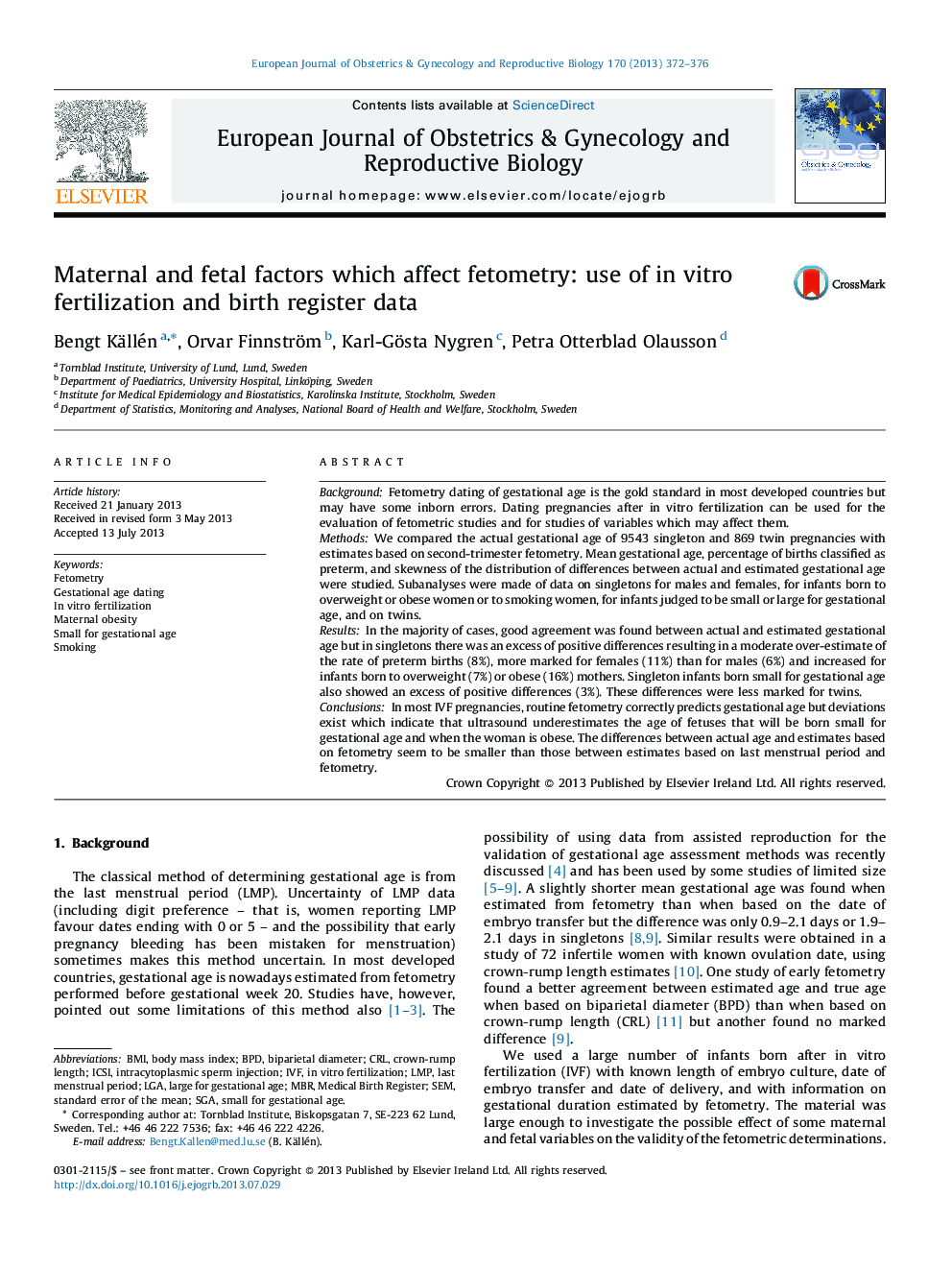| کد مقاله | کد نشریه | سال انتشار | مقاله انگلیسی | نسخه تمام متن |
|---|---|---|---|---|
| 6174065 | 1599812 | 2013 | 5 صفحه PDF | دانلود رایگان |

BackgroundFetometry dating of gestational age is the gold standard in most developed countries but may have some inborn errors. Dating pregnancies after in vitro fertilization can be used for the evaluation of fetometric studies and for studies of variables which may affect them.MethodsWe compared the actual gestational age of 9543 singleton and 869 twin pregnancies with estimates based on second-trimester fetometry. Mean gestational age, percentage of births classified as preterm, and skewness of the distribution of differences between actual and estimated gestational age were studied. Subanalyses were made of data on singletons for males and females, for infants born to overweight or obese women or to smoking women, for infants judged to be small or large for gestational age, and on twins.ResultsIn the majority of cases, good agreement was found between actual and estimated gestational age but in singletons there was an excess of positive differences resulting in a moderate over-estimate of the rate of preterm births (8%), more marked for females (11%) than for males (6%) and increased for infants born to overweight (7%) or obese (16%) mothers. Singleton infants born small for gestational age also showed an excess of positive differences (3%). These differences were less marked for twins.ConclusionsIn most IVF pregnancies, routine fetometry correctly predicts gestational age but deviations exist which indicate that ultrasound underestimates the age of fetuses that will be born small for gestational age and when the woman is obese. The differences between actual age and estimates based on fetometry seem to be smaller than those between estimates based on last menstrual period and fetometry.
Journal: European Journal of Obstetrics & Gynecology and Reproductive Biology - Volume 170, Issue 2, October 2013, Pages 372-376